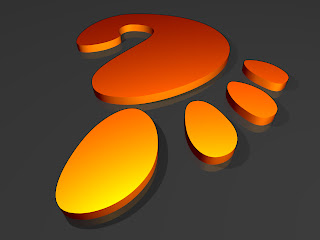
Customizing a GNOME Desktop
Desktop configuration is a very personal issue, as each user seems to have a particular favored
way of doing things. Without trying some changes, however, it’s hard to know how one can do
things. You now know enough to tweak a GNOME desktop a bit; in this project, you’ll change
some commonly altered configuration settings.
Step by Step
1. From the default GNOME desktop, right-click on a blank space on the panel.
2. Click the Properties menu item.
3. You can use this page to reposition the panel to any of the four edges of the desktop, but
leave the location alone for now. In the Size drop-down menu, select Small (36 pixels).
4. Check the Show/Hide Buttons box.
5. Check the Arrows on the Hide Buttons box.
6. Click Close. The panel at the bottom of the screen should now be shorter, and its icons
smaller and more widely spaced.
7. Right-click on a blank spot on the panel and select Add To Panel.
8. Select Utility and then System Monitor. A system monitor area should appear on the panel;
it will graphically show CPU usage.
9. Right-click on a blank spot on the panel and select Launcher from the menu.
10. Select System Tools and then Terminal. A terminal icon will appear on the panel; clicking
this icon will open a terminal where you can use the command-line interface.
11. Right-click on a blank spot on the panel and select Launcher from the menu again.
12. Select the Office menu and then Project Management. A Mr. Project icon should appear on
the panel; this tool is still under development, but it is similar in concept to Microsoft Project.
13. Right-click on a blank spot on the panel and select New Panel.
14. Select the Menu Panel option, and a menu bar should appear at the top of the desktop.
Applications and actions can be invoked from this menu bar, and it can also hold additional
launchers, applets, and utilities.
15. Right-click on the new menu panel at the top of the screen.
16. Select Add To Panel, and then the Accessories menu, and the Stock Ticker option. A stock
ticker area should appear on the menu panel.
17. Right-click on the stock ticker area on the panel and select Preferences. A configuration
page should appear.
18. Type RHAT in the New Symbol field.
19. Click the Add button, and then click Close. In five minutes, the Red Hat stock price should
begin scrolling in the stock ticker area, along with the default index information.
20. Move the icons on the panels by left-clicking them and then dragging them to the desired
locations.






